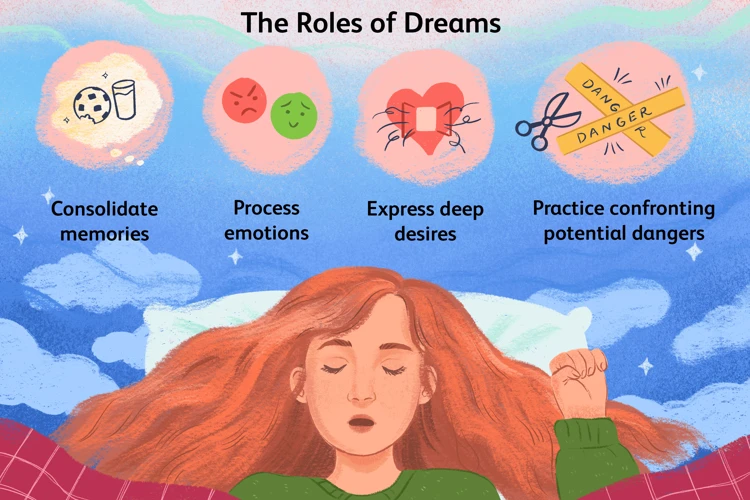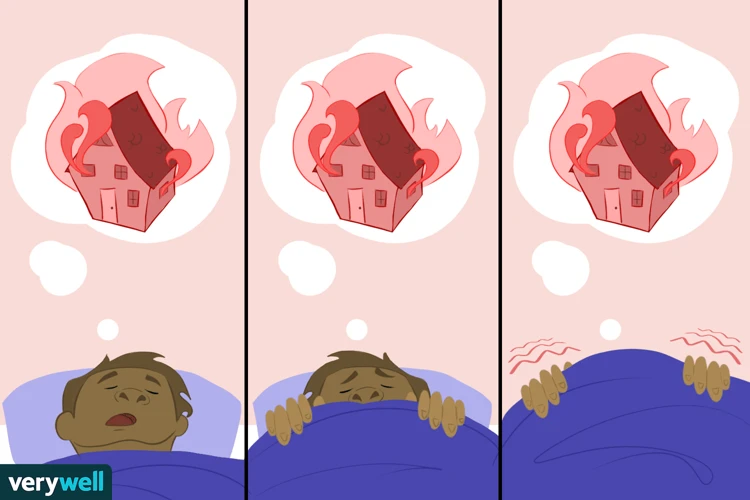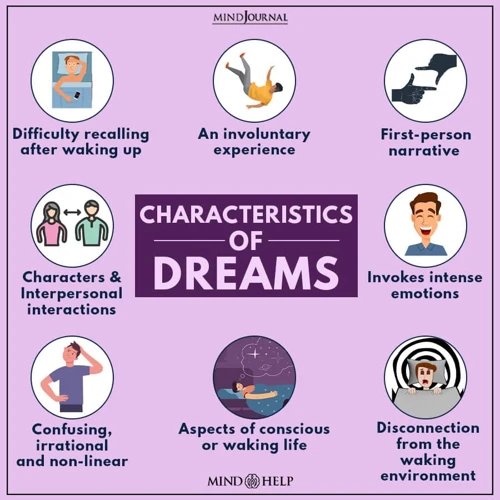Have you ever found yourself trapped in a nightmarish dream, unable to escape the horrors that unfold before you? Lucid dreaming, the ability to become aware that you are dreaming while still in the dream state, offers a glimmer of hope for those who experience these nightmarish dreams. In this article, we will explore the concept of lucid dreaming and its potential to overcome nightmares. Join us on a journey to unlock the secrets of the dream world, as we delve into techniques, coping strategies, and ways to create a peaceful sleep environment. Are you ready to take control of your dreams and conquer the darkness? Let’s embark on this fascinating exploration together.
What are Lucid Dreams?

Lucid dreams are a unique phenomenon where a dreamer becomes aware that they are dreaming while still in the dream state. These extraordinary dreams allow individuals to have a sense of control and consciousness within their dreams, blurring the line between the sleeping and waking worlds. In a lucid dream, one can actively participate in the dream scenario, manipulate the dream environment, explore their creativity, and even engage in problem-solving. This heightened state of awareness opens up a realm of possibilities for self-reflection, personal growth, and enhancing dream recall. While the concept of lucid dreaming has fascinated humans for centuries, scientific research into the phenomenon is still growing, shedding light on the brain mechanisms and processes behind this extraordinary experience. Lucid dreaming offers a pathway to delve into the depths of our subconscious mind, unlocking hidden potential and tapping into the rich tapestry of the human imagination. It is a powerful tool for self-exploration, introspection, and personal development.
Causes of Nightmares in Lucid Dreams

The causes of nightmares in lucid dreams can be attributed to various factors. Understanding these causes is crucial in addressing and overcoming them. Here are some common causes of nightmares in lucid dreams:
1. Fear and Anxiety: Strong emotions such as fear and anxiety can intensify during a lucid dream, leading to the manifestation of nightmares. These emotions often stem from unresolved fears, trauma, or stressful situations in waking life.
2. Subconscious Conflicts: Lucid dreams have a way of bringing subconscious conflicts to the surface. These conflicts, such as unresolved issues, repressed emotions, or inner turmoil, can manifest as nightmares within the dream context.
3. Sleep Disorders: Individuals with sleep disorders like sleep apnea or insomnia may experience fragmented sleep and disruptions in their dream cycles. These interruptions can contribute to the occurrence of nightmares during lucid dreams.
4. Lucid Dream Control Challenges: Attempting to control or manipulate a lucid dream without sufficient mastery and experience can lead to unintended outcomes. The exertion of control may result in nightmares or distortions within the dream environment.
5. External Influences: In some cases, external factors such as environmental stimuli, medication, or substance use can impact the content of lucid dreams. These external influences can contribute to the occurrence of nightmares.
It is important to remember that the causes of nightmares in lucid dreams can be highly individualized, and each person’s experience may differ. Identifying the underlying causes specific to your situation can help in developing effective strategies to overcome and mitigate these nightmarish dreams.
The Importance of Overcoming Nightmares

The importance of overcoming nightmares in lucid dreams cannot be understated. Nightmares can be distressing and disrupt the quality of sleep, leading to feelings of fear, anxiety, and exhaustion. Additionally, recurring nightmares can have a negative impact on overall mental well-being, causing heightened stress levels and interfering with daily functioning. Resolving nightmares within lucid dreams offers a unique opportunity to confront and overcome these fears and anxieties in a safe and controlled environment. By facing and addressing the root causes of nightmares, individuals can experience relief from their distressing dreams and improve their sleep quality and overall psychological well-being. Conquering nightmares in lucid dreams can empower individuals in their waking lives, fostering a greater sense of control, resilience, and emotional strength. It allows them to confront their fears head-on and gain mastery over their subconscious mind. So, whether it’s conquering the monsters that haunt your dreams or dispelling the recurring nightmares that plague your nights, overcoming nightmares in lucid dreams is crucial for achieving inner peace, restful sleep, and personal growth.
Techniques to Control Lucid Dream Nightmares

Controlling lucid dream nightmares can be a challenging but empowering endeavor. One effective technique is to practice mindfulness and reality checks while in the dream state. By cultivating a habit of questioning reality, dreamers can become more aware of when they are in a dream and take steps to regain control. Developing a dream journal is another valuable tool as it allows individuals to track recurring dream symbols and themes, enabling them to better understand their dreams and identify potential triggers. Additionally, utilizing lucid dream induction techniques, such as the Wake-Back-to-Bed method or mnemonic induction of lucid dreams (MILD), can increase the likelihood of having lucid dreams and provide opportunities to confront and overcome nightmares. By harnessing these techniques, individuals can transform their nightmarish dreams into transformative and empowering experiences.
Mindfulness and Reality Checks
Practicing mindfulness and incorporating reality checks into your daily routine can greatly enhance your ability to overcome nightmarish dreams in lucid dreaming. Mindfulness involves maintaining a present moment awareness and being fully engaged in the here and now. By cultivating mindfulness during the day, you can train your mind to carry this awareness into your dreams. This can help you to recognize when you are in a dream state, thereby triggering lucidity. Reality checks, on the other hand, are intentional actions or observations that you perform throughout the day to verify whether you are in a dream or reality. This habit can carry over into your dreams, prompting you to question the dream and become aware of its illusory nature. Some common reality checks include looking at your hands, trying to push your fingers through your palm, or checking the time on a clock. Engaging in these mindfulness practices and reality checks throughout the day serves as a familiar reminder to question your reality, which can then translate into lucid dreaming. By incorporating these techniques into your routine, you can increase your chances of achieving lucidity in your dreams and effectively overcome nightmarish scenarios.
Developing a Dream Journal
One effective technique to control lucid dream nightmares is by developing a dream journal. Keeping a dream journal helps you to document and analyze your dreams, providing valuable insights into recurring themes, patterns, and symbols. By writing down your dreams immediately upon waking, you can capture the vivid details while they are still fresh in your mind. This practice helps to improve dream recall and train your brain to be more conscious of the dream state. To develop a dream journal, follow these steps:
- Keep a notebook or use a journaling app specifically dedicated to recording your dreams.
- Place the journal or app by your bedside, ensuring easy access when you wake up.
- As soon as you wake up, before engaging in any other activities, write down as much as you can remember about your dream. Include any emotions, characters, locations, and events that stood out.
- Use descriptive language and vivid imagery to capture the essence of the dream.
- Add the date and any additional notes that may be relevant to the dream, such as your sleep patterns or recent experiences.
- Regularly review your dream journal to identify common themes, symbols, or patterns that may recur in your dreams.
- Reflect on the meaning and significance of these recurring elements, as they can hold valuable insights into your subconscious mind.
By cultivating the habit of maintaining a dream journal, you can gain a deeper understanding of your dreams and potentially uncover the underlying causes of your lucid dream nightmares. This self-reflection and analysis can empower you to take control of your dreams and transform them into more positive and fulfilling experiences.
Lucid Dream Induction Techniques
Lucid dream induction techniques are methods and practices that can help individuals increase their chances of having lucid dreams. These techniques aim to heighten self-awareness and promote recognition of the dream state while dreaming. Here are a few popular techniques that can be effective in inducing lucid dreams:
1. Reality Checks: Reality checks are simple, habitual actions performed throughout the day to determine whether one is dreaming or awake. Examples include looking at your hands, trying to push your finger through the palm of your hand, or questioning your reality. By making reality checks a habit, it increases the likelihood of performing them within a dream, leading to lucidity.
2. Mnemonic Induction of Lucid Dreams (MILD): The MILD technique involves setting an intention to remember that you are dreaming. Before going to sleep, repeat a mantra or affirmation such as “Tonight, I will have a lucid dream” or “I will recognize I am dreaming.” Visualize yourself becoming aware in a dream and imagine the details of your desired lucid dream. This increases your chances of becoming lucid during the dream.
3. Wake-Back-to-Bed (WBTB): The WBTB technique involves waking up after around 4-6 hours of sleep, staying awake for a short period (typically 15-60 minutes), and then going back to sleep. This technique capitalizes on the fact that REM sleep, when most vivid dreaming occurs, is more prevalent during later sleep cycles. By interrupting sleep and then going back to sleep, you are more likely to enter a dream state and increase the chances of lucidity.
4. Visualization and Meditation: Visualization and meditation exercises can help improve mental clarity and enhance focus, which are essential for lucid dreaming. Spend a few minutes before sleep visualizing yourself becoming lucid in a dream, imagine the sensations, sights, and sounds you may encounter. Practicing meditation can also help calm the mind, increase mental awareness, and improve overall dream recall.
It is important to note that not all techniques work for everyone, and consistency and patience are key when attempting to induce lucid dreams. It may take time and practice to find the techniques that work best for you. Experimenting with different methods and maintaining a positive mindset can greatly increase your chances of experiencing lucid dreams.
Understanding Dream Symbols

Understanding dream symbols is crucial for deciphering the hidden messages and meanings that our subconscious mind presents in our dreams. Dreams are often filled with symbols that carry personal significance and reflect our deepest desires, fears, and emotions. By analyzing these symbols, we can gain valuable insights into our inner selves. Common nightmare symbols such as falling, being chased, or being trapped can have different interpretations based on individual experiences and associations. It is important to note that dream symbols can vary in meaning from person to person, as they are highly subjective. Through self-reflection, mindfulness, and keeping a dream journal, we can begin to unravel the symbolic language of our dreams and uncover the deeper layers of our psyche.
Common Nightmare Symbols
Common nightmare symbols can vary from person to person, but there are some widely recognized symbols that often appear in nightmares. Understanding these symbols can provide insight into the underlying meanings and emotions associated with the nightmare. Here are some examples:
1. Falling: Falling in a dream often symbolizes a lack of control or fear of failure. It can represent a feeling of being overwhelmed or out of control in waking life.
2. Being chased: Being chased is a common nightmare experience that typically represents avoidance or confrontation with an issue or problem. It can indicate a sense of fear or anxiety about facing challenging situations.
3. Teeth falling out: Dreams about losing teeth can symbolize feelings of insecurity or powerlessness. It may suggest concerns about appearance, communication, or a fear of losing control.
4. Being trapped: Feeling trapped in a dream can reflect a sense of being stuck or restricted in some aspect of life. It could indicate feeling confined by responsibilities, relationships, or circumstances.
5. Being naked in public: Dreams of being naked in a public setting often signify feelings of vulnerability or embarrassment. They could indicate a fear of judgment or exposure of one’s true self.
6. Being unable to move or scream: This type of nightmare symbolizes a feeling of powerlessness or being unable to express oneself. It can be associated with a sense of being silenced or restrained in waking life.
It’s important to note that the interpretation of dream symbols can be highly personal, as they are influenced by an individual’s experiences, beliefs, and emotions. Keeping a dream journal can help identify recurring symbols and uncover their unique meanings for each individual. Understanding these symbols can assist in the process of self-reflection and finding resolution within the realm of lucid dreaming.
Interpreting Symbols for Personal Meaning
Interpreting symbols in dreams is a fascinating endeavor, as these symbols often hold personal meanings and insights into our subconscious mind. While certain symbols may have common interpretations, it is crucial to consider the individual’s unique experiences, emotions, and associations with these symbols. Dreams are deeply subjective, and their symbols can vary in significance from person to person. To interpret dream symbols for personal meaning, it is essential to engage in self-reflection and introspection. Take the time to ponder the emotions and experiences evoked by the symbols within your dream, as well as any personal memories or connections they may trigger. Keeping a dream journal can be immensely helpful in recognizing patterns and identifying recurring symbols. Additionally, seeking guidance from a therapist, dream analyst, or participating in dream-sharing communities can provide valuable insights and alternative perspectives. Remember, the key to interpreting symbols for personal meaning lies within your own intuition and connection to the psychological and emotional landscapes of your dreams. Trust in your inner wisdom and embrace the journey of self-discovery that dreams can offer.
Coping Strategies during a Lucid Dream Nightmare

Coping with nightmares during a lucid dream can be challenging, but there are several effective strategies to help manage and overcome the fear and anxiety that may arise. One technique is practicing relaxation exercises such as deep breathing and progressive muscle relaxation. These techniques can help calm the mind and body, allowing the dreamer to regain control and reduce the intensity of the nightmare. Another strategy is visualizing positive outcomes, where the dreamer actively imagines a more favorable and peaceful resolution to the dream scenario. This technique can shift the dream narrative towards a more positive direction and alleviate feelings of distress. Additionally, seeking assistance within the dream can be incredibly powerful. This can involve summoning a helpful dream character or calling out for help. By seeking support and collaborating with dream figures, the dreamer can combat the nightmare and regain a sense of control. With these coping strategies in mind, lucid dreamers can empower themselves to confront and conquer their nightmares, transforming their dream experiences into opportunities for growth and resilience.
Relaxation Techniques
Relaxation techniques can be a valuable tool when faced with a nightmarish scenario during a lucid dream. When confronted with fear or anxiety in a dream, it is essential to stay calm and centered. One effective relaxation technique is deep breathing. Take slow, deep breaths, focusing on inhaling and exhaling fully. This can help regulate your heart rate and induce a sense of calmness. Another technique is progressive muscle relaxation. Start by tensing and then gradually releasing each muscle group in your body, from your toes to your head. This technique promotes a state of physical and mental relaxation, alleviating tension and anxiety. Guided imagery is also an effective method to promote relaxation during a lucid dream. Envision yourself in a peaceful and serene environment, such as a tranquil beach or a lush forest. Immerse yourself in the sensory experience and allow the calming imagery to soothe your mind and body. By practicing these relaxation techniques, you can create a sense of tranquility and ease even in the most challenging dream situations.
Visualizing Positive Outcomes
Visualizing positive outcomes is a powerful coping strategy to navigate through lucid dream nightmares. When confronted with a nightmarish scenario, it is natural for fear and panic to set in. However, by consciously redirecting the focus towards positive outcomes, individuals can regain control and transform the dream into a more favorable experience. Visualizations can take many forms, such as imagining a protective shield surrounding oneself, summoning helpful characters or objects, or envisioning a peaceful and serene setting. By actively engaging in positive visualizations, dreamers can shift the energy of the dream and manifest more desirable outcomes. This technique taps into the power of the mind and the connection between thoughts and emotions. Through the creation of positive imagery, individuals can infuse their dreams with optimism, courage, and resilience. By practicing this technique repeatedly, it becomes easier to summon positive imagery even in the midst of a nightmarish dream, ultimately leading to greater control and a sense of empowerment within the dream world. So, the next time you find yourself in a lucid dream nightmare, remember to harness the power of visualization and transform the darkness into light and positivity.
Seeking Assistance within the Dream
Seeking Assistance within the Dream
When faced with a nightmarish scenario in a lucid dream, one powerful technique to regain control and overcome the fear is to seek assistance within the dream. There are several options to consider when seeking help from dream characters or entities:
1. Engage with a Dream Guide: Dream guides are fictional characters or spiritual beings that can appear in your dreams to offer guidance and support. The key is to mentally ask for their presence and be open to their arrival. Once they appear, communicate your intentions and seek their advice on how to navigate or resolve the nightmare. They can provide insights, offer protection, or even assist you in transforming the dream into a more positive experience.
2. Call upon Inner Strength: Another effective approach is to tap into your own inner strength and abilities. Recognize that you have the power to confront and overcome any challenges within the dream. By using affirmations or mantras such as “I am in control” or “I am safe and protected,” you can strengthen your resolve and shift the dream narrative towards a more positive outcome. Visualize yourself overcoming the obstacles and facing your fears head-on.
3. Seek Dream Characters for Support: Within a lucid dream, there are often other dream characters present. Approach them with the intention of seeking assistance. Engage in conversation, explain the situation, and ask for their help. These dream characters may offer unique perspectives, solutions, or even act as allies in your quest to conquer the nightmare. Remember, your dream characters are manifestations of your subconscious mind, and they can provide valuable insights and support.
4. Utilize Dream Objects or Tools: In lucid dreams, you may come across various objects or tools that can aid in overcoming nightmares. It could be as simple as finding a symbol of protection, such as a talisman or amulet, and using it to ward off negative entities or situations. Alternatively, you could discover a portal or doorway that leads to a safe haven or a more pleasant dream environment.
Remember, the key to seeking assistance within a lucid dream is to remain calm, focused, and open to the possibilities. Trust in your own abilities and be willing to explore the dream world with curiosity and determination. By reaching out for help, you can transform your nightmarish dreams into empowering experiences of growth and self-discovery.
Creating a Peaceful Sleep Environment

Creating a peaceful sleep environment is essential for promoting restful sleep and minimizing the occurrence of lucid dream nightmares. Here are some key considerations to help you establish a serene sleep environment. First and foremost, it is important to keep your bedroom clean and free from clutter. A tidy space can help ease the mind and create a sense of calmness. Additionally, invest in a comfortable mattress and pillow that provide adequate support for your body. Temperature also plays a crucial role in sleep quality. Keep your bedroom cool and well-ventilated using fans or air conditioning when necessary. Consider using earplugs or a white noise machine to drown out any disruptive sounds that may interfere with your sleep. Creating a consistent bedtime routine can signal to your body that it is time to relax and prepare for sleep. Engage in calming activities such as reading a book, taking a warm bath, or practicing relaxation techniques like deep breathing or meditation. Lastly, reduce exposure to blue light from electronic devices in the hours leading up to bedtime. The blue light emitted by screens can interfere with the production of melatonin, a hormone that regulates sleep. Consider implementing these strategies to establish a soothing sleep environment and promote a more peaceful night’s rest.
Preventing Lucid Dream Nightmares
Preventing lucid dream nightmares is essential for maintaining a peaceful and restful sleep experience. One of the key strategies is stress reduction and proper sleep hygiene. Managing stress levels during the day can help alleviate anxiety and prevent it from carrying over into your dreams. Incorporating relaxation techniques, such as deep breathing exercises or meditation, before bedtime can help create a calm and serene mind-state conducive to pleasant dreams. Additionally, it is important to avoid certain foods and stimulating activities before bed, as they can disrupt your sleep and increase the likelihood of nightmares. Steering clear of caffeine, heavy meals, and intense physical or mental exertion close to bedtime can contribute to a more serene sleep environment. Being aware of lucid dreaming trigger factors, such as sleep deprivation or irregular sleep patterns, can help prevent the occurrence of lucid dream nightmares. By implementing these preventative measures, you can create a peaceful sleep routine that minimizes the risk of nightmarish dreams and promotes restful sleep.
Stress Reduction and Proper Sleep Hygiene
Stress reduction and proper sleep hygiene play a crucial role in preventing lucid dream nightmares. Incorporating relaxation techniques into your daily routine can help reduce overall stress levels, ensuring a more peaceful sleep. Engaging in activities such as yoga, meditation, or deep breathing exercises before bed can promote a sense of calmness and relaxation, preparing the mind for a restful sleep. Additionally, establishing a consistent sleep schedule and creating a sleep-friendly environment can contribute to better sleep hygiene. Avoiding stimulating activities and electronic devices before bedtime is essential, as the blue light emitted from screens can disrupt the production of melatonin, a hormone that regulates sleep-wake cycles. Creating a soothing sleep environment with a cool and dark room, comfortable bedding, and a relaxing bedtime routine can further optimize the chances of having a nightmare-free lucid dream experience. Prioritizing stress reduction and following proper sleep hygiene practices are vital steps in promoting a healthy and peaceful sleep, creating an ideal foundation for lucid dream exploration.
Avoiding Certain Foods and Stimulating Activities Before Bed
When it comes to preventing lucid dream nightmares, it is important to pay attention to your nighttime routine and make conscious choices about what you consume and the activities you engage in before bed. Avoiding certain foods and stimulating activities can help create a peaceful sleep environment, reducing the likelihood of nightmares interrupting your slumber.
Avoid These Foods:
- Caffeine: Stimulants like coffee, tea, energy drinks, and chocolate should be avoided in the evening as they can interfere with sleep and increase the chances of experiencing intense dreams. Opt for decaffeinated alternatives instead.
- Spicy Foods: Eating spicy or heavy meals close to bedtime can cause indigestion or heartburn, which can disrupt your sleep and potentially trigger nightmares.
- Alcohol: While alcohol may initially make you drowsy, it can negatively impact the quality of your sleep, leading to more fragmented dreams and potential nightmares. Limit your alcohol consumption, particularly before bed.
Avoid Stimulating Activities:
- Screen Time: Engaging in activities that involve screens, such as watching television, using smartphones, or playing video games, before bed can overstimulate your brain and make it harder to relax. The blue light emitted by screens can also interfere with the production of melatonin, a hormone that regulates sleep.
- Intense Exercise: Vigorous physical activity too close to bedtime can elevate your heart rate and body temperature, making it difficult to wind down and enter a restful state. Opt for gentle stretching, yoga, or relaxation exercises instead.
- Stressful Work or Discussions: Engaging in stressful work-related tasks or intense conversations before bed can stimulate your mind and make it harder to transition into a calm and peaceful state. Set aside dedicated time for relaxation and wind-down activities.
By being mindful of the foods you consume and the activities you engage in before bed, you can create a calming routine that promotes restful sleep and reduces the likelihood of experiencing lucid dream nightmares.
Avoiding Lucid Dreaming Trigger Factors
To prevent lucid dream nightmares, it’s important to be mindful of certain trigger factors that can contribute to their occurrence. By identifying and avoiding these triggers, you can create a more peaceful and pleasant dream experience. Here are some key factors to consider:
1. Stress: High levels of stress in daily life can carry over into your dreams, leading to more frequent nightmares. Practice stress reduction techniques such as meditation, deep breathing exercises, or engaging in activities that help you relax before bed.
2. Sleep Hygiene: Maintaining a regular sleep schedule and practicing good sleep hygiene can greatly improve the quality of your sleep and subsequently your dreams. Create a calm and comfortable sleep environment, avoid stimulants like caffeine before bed, and establish a bedtime routine that signals to your body that it’s time to rest.
3. Emotional Triggers: Pay attention to emotional triggers that may lead to vivid and unsettling dreams. These triggers can vary from person to person, but common ones may include watching violent or disturbing content before bed, engaging in intense conversations, or experiencing emotional distress. Avoiding these triggers, especially in the hours leading up to sleep, can help prevent negative dream experiences.
4. Environmental Factors: Your physical surroundings can also influence your dreams. Sleeping in a noisy or uncomfortable environment can disrupt your sleep cycle and increase the chances of nightmares. Make sure your bedroom is quiet, dark, and conducive to a restful sleep. Consider using white noise machines or earplugs if external noise is unavoidable.
By being mindful of these trigger factors and making conscious efforts to avoid them, you can create a sleep environment that promotes positive dreaming and reduces the likelihood of lucid dream nightmares. Remember, a peaceful mind and a relaxed body are more likely to lead to pleasant dreams.
Conclusion
In conclusion, lucid dreaming offers a fascinating and empowering avenue for individuals to navigate the realm of dreams and overcome nightmarish experiences. By honing the ability to recognize when one is dreaming, dreamers can gain a sense of control and agency within their dreams, effectively transforming their nightmares. Through mindfulness techniques, such as reality checks and developing a dream journal, individuals can cultivate greater awareness and lucidity in their dreams, paving the way for positive dream experiences. Understanding dream symbols and utilizing coping strategies like relaxation techniques and visualizing positive outcomes can further enhance the ability to manage and navigate through lucid dream nightmares. Creating a peaceful sleep environment and engaging in stress reduction techniques not only contribute to overall well-being but also help prevent lucid dream nightmares. By implementing these strategies, individuals can harness the power of lucid dreaming to explore the depths of their subconscious mind, promote personal growth, and thrive in the world of dreams. So embark on this journey of self-discovery, unlock the potential of lucid dreaming, and conquer your nightmarish dreams with confidence and resilience. Your dream world awaits!
Frequently Asked Questions
1. Can anyone learn to have lucid dreams?
Yes, anyone can learn to have lucid dreams. While some individuals have a natural predisposition, various techniques and practices can help others develop the skill of lucid dreaming.
2. Are lucid dreams the same as vivid dreams?
No, lucid dreams and vivid dreams are different. Vivid dreams refer to dreams that have a high level of clarity and sensory detail, while lucid dreams specifically involve being aware that you are dreaming while in the dream state.
3. How can I increase my chances of having lucid dreams?
There are several techniques you can try to enhance your chances of having lucid dreams. Keeping a dream journal, practicing reality checks, and utilizing lucid dream induction techniques like MILD or WILD can help in increasing your chances.
4. Are there any potential risks or side effects of lucid dreaming?
Generally, lucid dreaming is considered safe. However, some individuals may experience heightened emotional intensity or sleep disruptions. It’s important to practice good sleep hygiene and seek guidance if you have a history of sleep disorders or mental health issues.
5. Can lucid dreams be used for problem-solving?
Yes, lucid dreams can be utilized for problem-solving. By becoming lucid within a dream, you can actively explore and manipulate the dream scenario, allowing for creative problem-solving and gaining insights into personal challenges.
6. Is it possible to have a lucid nightmare?
Yes, it is possible to have a lucid nightmare. During a lucid nightmare, you become aware that you are dreaming but may still experience fear or anxiety within the dream. Implementing coping strategies and techniques can help overcome these distressing experiences.
7. Can lucid dreams be controlled completely?
While lucid dreams provide a level of control within the dream state, complete control over every aspect of the dream may not always be achievable. Dreams can be influenced, but they can also have a certain level of unpredictability.
8. Can lucid dreaming improve sleep quality?
Lucid dreaming itself does not directly improve sleep quality, as it can be mentally stimulating. However, promoting good sleep hygiene practices, such as a relaxing bedtime routine, can indirectly lead to more lucid dreaming opportunities.
9. Can lucid dreaming have spiritual significance?
For some individuals, lucid dreaming holds spiritual significance. It can be a means of exploring the subconscious mind, connecting with the inner self, and even engaging in self-reflection or spiritual growth.
10. Is lucid dreaming a form of escapism?
Lucid dreaming can be seen as a form of temporary escapism, as it allows individuals to immerse themselves in alternate realities. However, it can also be a tool for self-exploration and personal development when used consciously and with intention.








